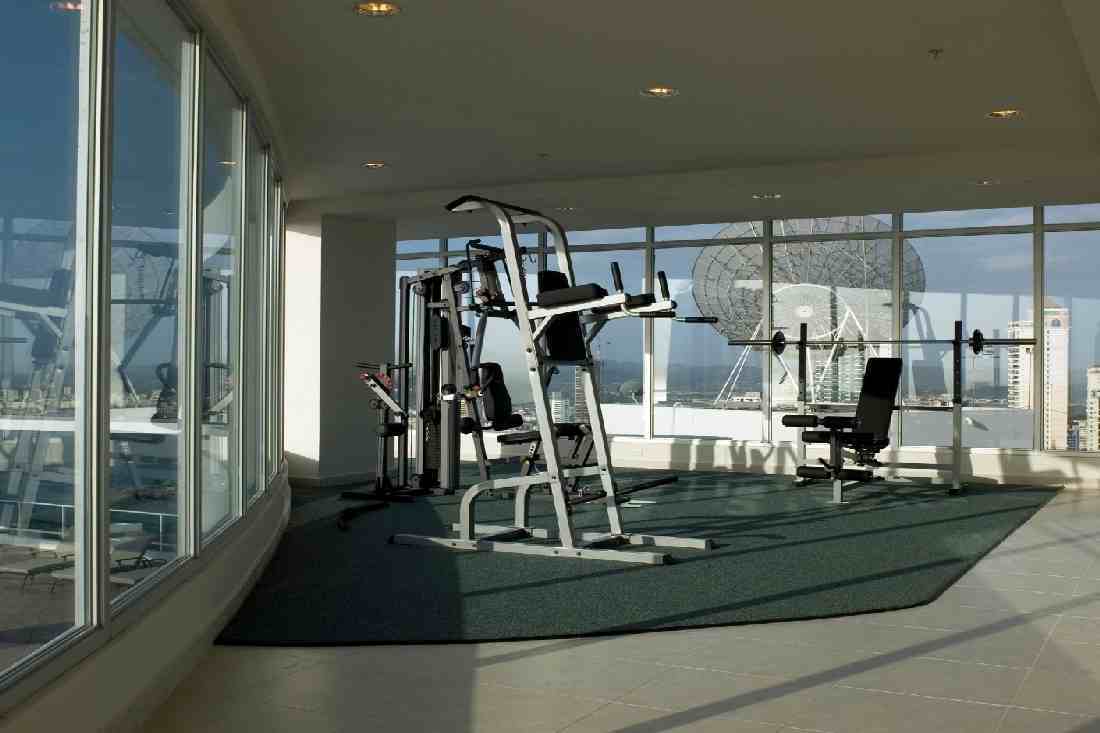Have you ever found it difficult to lean forward due to a tight lower back? What happens if you sit down for a long time? Have you found yourself rubbing your sore lower back muscles lately when you want to get up and get some rest? How about the longing to lift a small weight, a suitcase or even a grocery bag to shoulder height more easily? If you answered yes to any of the above questions, you may benefit from lower back strengthening exercises.
You would also be in good company if your answer was yes. Low back pain is the second leading cause of disability among US adults, with an estimated 80% of the population suffering from low back pain during their life. If you’re experiencing tightness, soreness, or soreness in this area above your hips but below your ribs, we have an exercise routine to help strengthen your lower back.
Maybe you are not in pain (yes!) but want to strengthen your lower back muscles for other reasons. A strong body has all sorts of benefits, including a reduced risk of injury, better daily functional activities, and increased athletic performance! You might not often think about your back muscles: out of sight, out of mind, right? However, you probably want to give them a little more attention.
Strong back muscles are essential to support strong muscles in the front body (abdominal and core muscles, we’re talking about you!). Also, strong back muscles promote good posture and can help keep chronic problems like back pain at bay.
Strong upper body muscles (and particularly back muscles) are not only the key to a balanced body; they are also your best defense against pain and injury for years to come. If you spend a lot of time at your desk, doing regular back exercises at home can help you retract your shoulder blades and stay upright, which improves your posture.
However, without the crossover cable machine or the exercise benches at the gym, doing back exercises at home can sometimes seem difficult. To help you, in this article, we are going to discuss some back exercises to do at home to build a strong back and shoulders for an overall more stable person.
Possible Causes of Back Pain
The lower back has arguably the hardest work of any section of the spine. While your lower back is very strong, it is also very demanding and presents many opportunities for injury. Lower back strain is one of the most common causes of back pain. What is lumbar strain? Lower back strain occurs when the lower back is overused or abused. Stress can even cause painful symptoms such as muscle cramps. Muscle or ligament strains can be caused by repetitive movements, heavy lifting, or awkward postures.
Another possible cause of back pain is bulging or torn intervertebral discs between the vertebrae. This can compress the spinal nerves, which often (but not always!) causes pain. Bulging or ruptured discs are sometimes found on MRIs of people without back pain, so these symptoms are ruptured; Don’t worry, we’re here with ways to strengthen this area of your back.
Strengthens the Lower Back
Lower back strengthening and stretching exercises can help stabilize the lower spine and support the upper body. Examples are plank and knee-to-chest stretches. Training your lower back can also help reduce and prevent pain. Stretching your back muscles after completing a back strengthening routine can help prevent muscle pain and injury. It can also provide additional benefits such as improving range of motion and flexibility.
How to Do the Exercises?
It goes without saying how much we strain our back muscles every day. Whether it’s lifting bags of groceries up a flight of stairs or bending down to pick something up off the floor, we use our buttocks to perform the most complex and simple of tasks. The back is involved in literally every movement. Even when you’re not doing a “back exercise,” your back is still anchored and stabilized to support all arm gestures, core exercises, balance exercises, and leg movements.
Can you guess how many muscles the human back has? About 140 overlapping muscles. Major muscles are divided into three groups: extrinsic, intermediate, and intrinsic, which we underuse while sitting at our desks all day. What’s worse, stress and anxiety also usually manifest as tension in the neck and back before spreading to other parts of the body. Talk about a bad chain reaction.
Whether you want to eliminate back pain, improve your athletic skills, or, as we said, look better from behind, training is key. A strong back allows us to stabilize better, which means you work more efficiently and get more out of movements like planks, bicep curls, and even cardio moves like running or speed skating. The back is a secret weapon for a better workout. When one stands up during an exercise and anchors their shoulder blades down and back, they feel more triumphant, which boosts their self-esteem.
Glute Bridge
The Glute Bridge works on a person’s gluteus maximums, the largest of the glutes or gluteus muscles that make up the buttocks. This muscle is activated when a person straightens their hips, such as when rising from a squat. It also helps with external rotation, where the knee and hip move away from the body, and abduction, where the leg moves away from the body. According to several studies, researchers have linked weak glutes to back pain. Strengthening these muscles can help prevent this symptom. The glutes help stabilize the lower back by acting as a stabilizer and mobilizer. Strong glutes can stabilize and support your lower back and hips, and help stabilize your knees when they are extended.
To perform a glute bridge, a person must follow these steps:
Step 1: Lie flat on the floor with your knees bent and your feet hip-width apart. Place your arms by your side, palms up.
Step 2: Tighten your abs and tighten your glutes.
Step 3: Lift the pelvis off the floor. Continue lifting so your body forms a straight line through your shoulders, hips, and knees.
Step 4: Hold the position for at least 2 seconds.
Step 5: Slowly return to the starting position.
Step 6: Repeat the above steps 10-15 times.
Bird Dog
The bird dog trains the gluteal muscles. It also trains the back extensors, which attach to the back of the spine and allow a person to stand, bend, and rise.
To perform the bird dog exercise, a person must perform the following steps:
Step 1: Begin the exercise on your hands and knees with your shoulders directly over your hands and your hips directly over your knees.
Step 2: Tighten your abdominal muscles and extend your right arm in front of you.
Step 3: Hold the position and keep your balance.
Step 4: Slowly raise your left leg and extend it behind your body.
Step 5: Hold the position for 15 seconds.
Step 6: Slowly return to starting position and repeat on opposite side.
Step 7: Repeat 5 times.
Plank
The plank exercise primarily works the abs, but also engages the arms, shoulders, hip flexors, and feet, making it a good full-body stability exercise. This position can also activate the extensors of the back and the quadratus lumborum, the deepest muscle in the back. It extends from the lower rib to the pelvic bone.
A person can perform a plank by following these steps:
Step 1: Lie on your stomach with your forearms flat on the floor and your elbows directly at shoulder level.
Step 2: Tighten your abs and glutes.
Step 3: Lift your hips and both knees off the floor.
Step 4: Hold the position for 10 to 30 seconds without letting your pelvis drop toward the floor.
Step 5: Slowly return to the starting position, then repeat 5 times.
Modification: A person can make the exercise less challenging by slightly bending the knees and keeping them on the floor. You should focus on maintaining a straight line from your knees to your shoulders.
Side Plank
The side plank is a modified version of the plank that works the quadratus lumborum, gluteus Medius, and tensor fascia latae (TFL). These muscles are important for hip stability.
A side table includes the following steps:
Step 1: Lie on the right side of your body, right leg slightly bent and left leg straight, foot on the floor. Make sure your right arm is directly under your right shoulder and your forearm is extended forward.
Step 2: Tighten your abs and lift your right hip off the floor.
Step 3: Lift your right knee off the floor to straighten your right leg and stack your feet on top of each other.
Step 4: Keep your body straight and hold the position for 10 to 30 seconds.
Step 5: Slowly return to the starting position and repeat on the other side.
Step 6: Repeat the above steps five times.
Modification: If this exercise is too difficult for you, you can bend your lower knee slightly and keep it on the floor.
Abdominal Retraction Maneuver
Strong abdominal muscles support the spine and keep the hips in proper alignment. Weak abdominal muscles can lead to weak core muscles, which can cause lower back pain.
The transversus abdominis (TA) is a deep abdominal muscle that helps stabilize the spine. The abdominal retraction maneuver (ADIM) is an exercise that can help strengthen the TA.
To perform the ADIM, a person must complete the following steps:
Step 1: Lie on your back, knees bent and arms at the sides of the vine.
Step 2: Inhale.
Step 3: Exhale while contracting your abs and drawing your navel toward your spine.
Step 4: Hold for 10 seconds, then release. Rest for 15 seconds.
Step 5: Repeat 10 times.
Stretching Exercises
According to the American Academy of Orthopedic Surgeons, a person should follow their back strengthening exercises with back stretching exercises. This approach helps restore range of motion and flexibility while preventing muscle soreness and injury.
The following are some lower back stretches that people can incorporate into their daily routines.
Knee To Chest Stretch
Knee-to-chest stretches can help lengthen the muscles of the lower back and relieve tension and pain.
A person can perform the knee-to-chest stretch as follows:
Step 1: Lie with both feet flat on the floor.
Step 2: Lift your right leg and bend your knee toward your chest.
Step 3: With both hands, pull your right knee toward your chest.
Step 4: Keep your right knee against your chest for a few seconds.
Step 5: Return to the starting position.
Step 6: Repeat with left leg, then return to starting position.
Kneeling Back Stretch
The kneeling back extension can help stretch the muscles of the lower back and relieve pain and tension in these areas.
To perform the kneeling back stretch, a person can follow these steps:
Step 1: Begin the exercise on your hands and knees, place your knees hip-width apart, with your shoulders directly over your hands.
Step 2: Round your back, draw your belly button toward your spine and tilt your lower back toward the floor.
Step 3: Hold the position for 5 seconds.
Step 4: Gently rock back and lower your buttocks as close to your heels as possible. Make sure your arms are stretched out in front.
Step 5: Hold the position for 5 seconds.
Step 6: Gently rock back to the starting position. Repeat 10-15 times.
Modified Seated Side Spreader
The seated lateral spread stretches the hamstrings, abductors, and extensors in the middle and lower back. For the seated side straddle, a person must perform the following steps:
Step 1: Sit with both feet flat on the floor and stretched out in front of you. Feet should be far enough apart that the legs form a “V”.
Step 2: Bend your left leg, bring your left foot up to touch your right knee, and let your left knee come away from your body.
Step 3: Keeping your back straight, bend from the hips and grasp the toes of your right foot.
Step 4: Slowly round your spine and extend your hands toward your right ankle or shin while lowering your head as close to your right knee as possible.
Step 5: Hold for 30 seconds, then relax for 30 seconds. Repeat on the other side.
Step 6: Perform 5-6 repetitions.
Summary
Together, stretching and strengthening exercises for the lower back can help improve lower back strength, stability, and flexibility. In this way, they can help relieve and prevent lower back pain. If any of the above back exercises make your back pain worse, it is important to stop doing them immediately and see a doctor.




